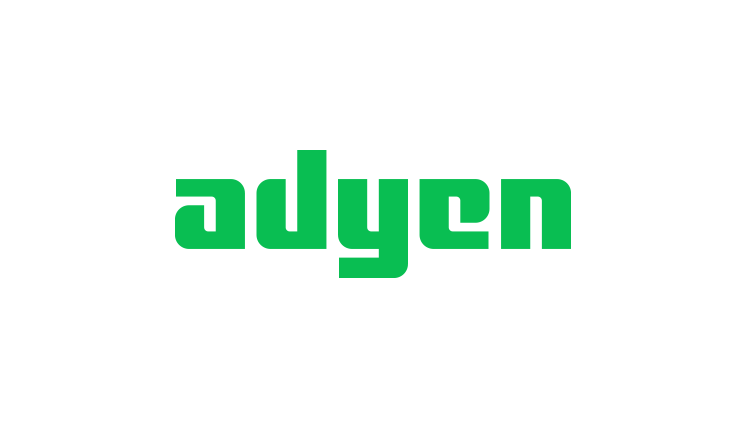In Focus: Adyen – The Cashless Stadium

As fans return to the stadium environment after over a year away due to the Covid 19 pandemic fcbusiness speaks to Colin Neil, Head of Commercial (UK) at Adyen about going cashless.
What are the current trends in cashless payments?
According to our latest research, 58% of consumers now prefer to use card-based payments instead of cash. But it goes further than that. 59% are worried about the hygiene of card terminals and want to pay using contactless methods. Touch-free commerce is here to stay, and with it comes a plethora of new payment options.
First, there’s the rise of digital wallets, which are easy to set up, very secure, and frictionless, which increases conversions. Apple Pay and Google Pay™ have the added benefit of helping to blur the lines between online and offline transactions so customers can move seamlessly between the two.
Then there are QR codes, which are popping up everywhere. From digital menus to shoppable window displays, it’s been heralded as a means of returning to ‘normal’ while maintaining social distance. From a payments perspective, QR codes can also be used to trigger an ecommerce payment at the point of sale (POS). For example, the POS terminal generates a QR code which, when scanned, directs the shopper to an online payment page.
Both digital wallets and QR codes remove the contactless transaction limit so can be used for payments well above £45.
And finally, it’s worth mentioning self-service options such as kiosks. These put the customer firmly in the driving seat and let them place orders and pay without having to interact with anyone at all. Our research found that 49% of consumers want businesses to use technology such as self-checkout to reduce person-to-person contact, so it’s a trend worth watching.
All these emerging payment methods mark a significant change in consumer behaviour. It’s not just a matter of being cashless; stadiums need to think about how fans want to interact with them and their vendors during their visit.
From a technical perspective, what factors should a stadium or venue operator consider when choosing a cashless payments provider?
Conversely, when you’re looking for a new payments provider, the last thing you should be thinking about is payments – at least not initially. First, stadiums should think about the problems they’re looking to solve. What sort of experience do they want to give the fans? What customer journeys would they like to offer? How do they want to manage things in the backend?
Once you know what you’re looking to achieve, you should look for a payments provider that can help get you there. For example, you might want to create a single view of your fans, from their first ticket purchase, to their half-time burger, and right through to their collection of souvenir shirts. If that’s the case, you’ll want a payments provider that can help you marry your online and offline sales into one system so you can see everything in one place. Or perhaps you want to introduce a frictionless loyalty program where the fan’s payment card acts as their loyalty card, in which case you’ll want a partner that can help you achieve that.
All that said, it’s important to consider that technology and trends are likely to change. Every time you ‘plug in’ a new functionality with a new partner, your technology stack becomes more complex and harder to evolve. Ideally you want one partner that can help you achieve your objectives today, as well as in five years time.
How important is it to optimise the payments function from a customer experience perspective?
Here’s a sobering stat for you: 67% of UK consumers won’t return if they’ve had a bad experience either in-store or online, and for 72%, ease of purchase is as important as the quality of product. Of course a dedicated fan is probably more forgiving than most; but even so, you’re likely to close more sales if your payment experience is good. With that in mind, here are a few key points for stadium and venues to consider:
Consistency: Ensure the same payment methods are supported across every touch-point in a fan’s journey. You can even remember your fan’s preferred methods for next time and offer that as a quick, one-click option.
Convenience: How can you make every payment easier? Can you keep their card on file so they don’t have to enter their details every time? Thanks to tokenisation technology, you can do this without worrying about data breaches and leaked card details. If you do this, consider the opportunities you have for capturing that payment information, for example, during their initial ticket purchase.
Stay one step ahead: Your customers will appreciate the efforts you make to ensure they can enjoy the latest payment innovations. This isn’t about gimmicks but about staying on top of trends as they emerge and supporting new payment experiences as they become more widely adopted. No one wants to appear outdated or offer clunky experiences.
How important is payment security and what factors must be considered around this?
The rise of online payments means a greater vulnerability to online fraud. But luckily, these days technology can help. Risk management is all about balance. If your risk rules are too tight, you’re likely to inadvertently block legitimate customers. Whereas of course if they’re too loose, you leave yourself vulnerable to attacks. A data-driven approach will help you walk that fine line. Your risk tool should use data from every transaction on its system to spot fraudulent behavior and stop an attack before it happens.
Another important consideration is Strong Customer Authentication (SCA). Starting from June 2021, card issuers in the UK will begin declining non-authenticated transactions. It will require the customers to identify themselves using 2 of 3 factors, which can be a combination of something they know (like a password), something they own (like a smartphone), and something they are (such as biometrics). However, authentication can be avoided by applying exemptions per transaction. It’s worth working with a payments partner that automatically knows when to and when not to apply SCA. In that way, you can protect your conversion and not disrupt customers unnecessarily.
What efficiencies can be gained from having a fully integrated payments function?
Working with a single, unified payments partner has lots of advantages. Firstly your tech stack will be very straightforward since you won’t have to patch lots of separate elements together. This helps drive efficiency since updates and maintenance are managed in one place, which will keep you nimble. You’ll also consolidate all your customer payment data which will streamline your reconciliation and reporting.
Looking beyond efficiencies, a fully integrated payments function will also help you build a stronger relationship with your customers. You’ll be able to create a 360-degree view of their behaviour so you can target them with relevant messaging and tailor the experience to their preferences. You can use the data to inform your decisions based on the way fans buy from you both online and in the stadium. And you’ll be able to develop meaningful loyalty programs, which can be tied to their payment card and actively track their results.
Of course, everything comes with a caveat. You don’t want to put all your eggs in one basket and find yourself tied to a payments partner that isn’t able to deliver. It’s definitely worth doing your research, following up on customer references and thoroughly testing the software before diving in.
About Adyen
We built a payments platform from the ground up to help fast-growing businesses. For more information visit: www.adyen.com +44 203 936 4029



